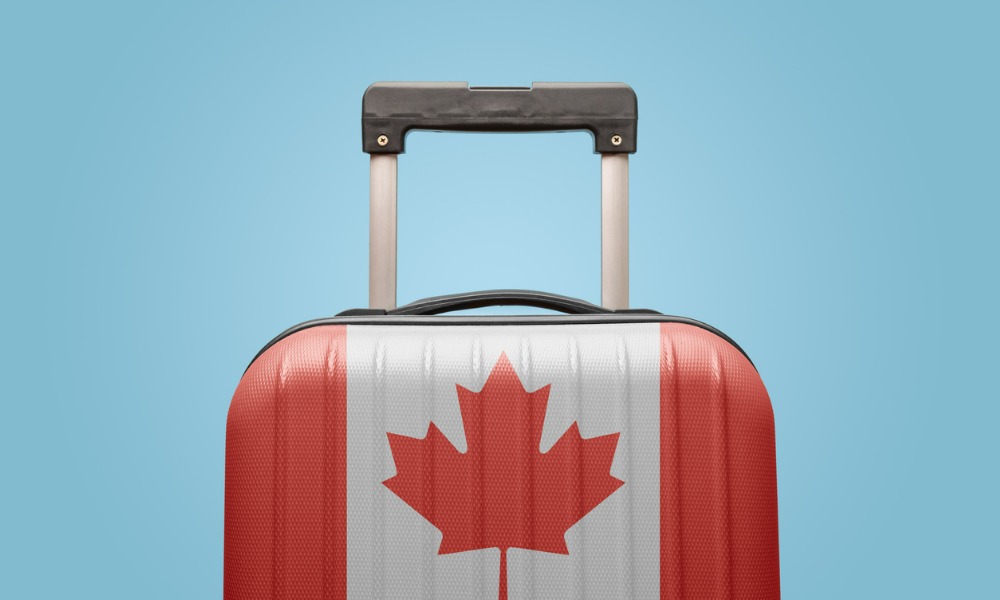- What are the ways to immigrate to Canada?
- How easy is it to move to Canada?
- Family or Spousal Sponsorships
- Express Entry
- Provincial Nominee Program (PNP)
- How can an immigration lawyer help a client who wants to immigrate to Canada?
- How easy is it to move to Canada: easing your way up to the Great White North
While the dream of living in the Great White North seems achievable, it’s not always that carefree. As immigration lines begin to tighten up, there still are simple options that you can consider when immigrating to Canada.
If you’re wondering how easy it is to move to Canada, then this article is for you. Even if this article provides some key information, having an immigration lawyer by your side is still the best option if you're planning to take this route.
What are the ways to immigrate to Canada?
Lawyers from the Vancouver-based Heron Law Offices gave some insights as to the different ways of how you can immigrate to Canada. “One can immigrate to Canada through either the economic stream, family class, or humanitarian and refugee options,” says Will Tao, the Principal/Canadian Immigration Lawyer at Heron Law Offices.
“Each year the Government releases a level plan where the exact target in each category is adjusted, but the focus likely will continue to be on economic and family class stream. There is also a current 'in-Canada focus' for those who are already in Canada as a students and workers.”
Hamidreza Siavashpour, also a Canadian Immigration & Refugee Lawyer at Heron Law Offices, explained more on how these methods work:
-
Economic immigration: includes programs managed through Express Entry—the Federal Skilled Worker, Canadian Experience Class, and Federal Skilled Trades streams—as well as the Provincial Nominee Programs (PNPs), which are administered by individual provinces and territories, with Québec operating its own selection process
-
Business immigration programs and regional initiatives: like the Start-Up Visa and the Atlantic Immigration Program that further support entrepreneurs and skilled workers in specific regions
-
Rural and Francophone Community Immigration Pilots: recently launched by the IRCC to facilitate permanent residence for skilled workers with job offers in specific designated rural or Francophone minority communities outside Québec
-
Family class sponsorship: allows Canadian citizens, permanent residents, or persons registered as Indian to sponsor spouses, partners, children, parents, grandparents, or other eligible relatives
-
Refugee protection: is available to individuals who apply for asylum within Canada or at the border, while Canada’s refugee resettlement program assists those referred by the United Nations Refugee Agency, a designated referral organization or a private sponsor
Laura Schemitsch, another Canadian Immigration & Refugee Lawyer at Heron Law Offices, says that the ways in which one can immigrate to Québec differs from the rest of Canada. As such, it may also be best to consult with an immigration lawyer practicing in the province.
How easy is it to move to Canada?
Tao thinks that there is no "easy" option anymore. “Immigrating to Canada is a process that will require at the very least patience and more often than not, needing to first be in Canada to take advantage or to meet certain requirements.”
Siavashpour agrees. However, he adds that some programs are widely regarded as having fewer barriers to entry.
“Among them, family sponsorship, particularly for spouses or common-law partners, is often considered the most straightforward option for eligible applicants, as it mainly requires proof of a genuine relationship and basic sponsor eligibility," he explains. "For skilled workers, Express Entry remains the fastest and most accessible economic immigration route.”
These “easy” ways to move to Canada may be offered by either the federal or the provincial governments. It will also depend on your skills, age, status, citizenship, and family or employment connections within Canada.
“For some applicants, the 'easy' option is clear and for many others there will not be an 'easy' option,” Schemitsch adds. “Regardless, in every case, immigration to Canada involves carefully planning and preparation and selection of the best aligned program based on the eligibility criteria.”
Easiest options when moving to Canada
Generally, the easiest ways to move to Canada are through these options:
- Sponsorship of spouses or family members
- Express Entry
- Provincial Nominee Program (PNP)
Of course, there are other ways of immigrating to Canada, although these choices would have specific and harder requirements. These other options are:
- Atlantic Immigration Program
- Home Care Worker Immigration
- Refugee immigration
- Start-up visa
- Other programs by the provinces
To give you an overview of how easy it is to move to Canada, here’s a video which explains the overall policy in accepting immigrants:
For more information on how easy it is to move to Canada, consult the best immigration lawyers in Canada as ranked by Lexpert.
We’ll discuss these simple—but still laborious—options to move to Canada. You can also use the table of contents above to skip directly to one of these options.
1. Family or Spousal Sponsorships
Sponsorship is one of the easiest ways to move to Canada, especially if you have a family member who is a Canadian. Also called family reunification, this process allows a Canadian to sponsor any of the following family members:
- spouse, common-law partner, conjugal partner
- dependent child, either by age or because of a disability
- adopted child
- parents and grandparents
- other relatives
Both the sponsored person and the Canadian sponsor must meet certain requirements and conditions. As reference, these requirements are set by the:
- Immigration and Refugee Protection Act (IRPA) and its Regulations
- regulations by the Immigration, Refugees and Citizenship Canada (IRCC)
There are several factors why family or spousal sponsorship is one of the easy methods to immigrate to Canada:
-
no work needed: although they can apply for an open work permit after they arrive in Canada, it’s not always required that the sponsored person must be ready to work before or after applying for sponsorship
-
online application: applications for sponsorship are done online, which makes the process even easier for spouses or family members to be sponsored who are currently living outside Canada
-
lighter requirements: compared to other methods of immigrating to Canada, the policy of Canada is to be somehow lenient on family reunification, given that all requirements are met
Still, it’s important to be in touch with a legal professional before embarking on this immigrating journey. “An immigration lawyer can help a client identify and address issues they may not be aware of (i.e. misrepresentation) to prevent issues or delays with their application,” Schemitsch says.
Family sponsorship
Both the Canadian sponsor and the sponsored foreign spouse must meet a lot of requirements, so that the foreign spouse can immigrate to Canada:
Requirements for sponsors
To qualify as a sponsor, the Canadian spouse, partner, or family member must:
-
be 18 years old and above
-
be currently living in Canada at the time of the sponsorship
-
either be:
- a Canadian citizen
- a registered Indian under the Canadian Indian Act
- a Canadian permanent resident, currently living in Canada
-
not be receiving any social aid, other than for a disability
-
provide for the basic needs of the sponsored person and their own selves, which is also called the Minimum Necessary Income (MNI)
Having an immigration lawyer would be an advantage, especially when struggling with these requirements. Karina Juma, an Articling Student at Heron Law Offices, says that lawyers “provide realistic advice based on the client’s situation (e.g. finances, educational background, family ties) and find creative ways to challenge program limitations (e.g., overcoming the MNI in family sponsorship).”
Requirements for sponsored family member
Canada’s immigration laws also have certain restrictions on which family members can be sponsored to move to Canada. They are:
-
family members who are related to the sponsor either by blood or through adoption, (e.g. parents and grandparents)
-
family members who are still a dependent child (e.g. brothers or sisters, half brothers or sisters, or stepbrothers or stepsisters)
-
orphaned family members, who are related to the sponsor by blood or by adoption, are single, and are under 18 years old (e.g. the sponsor’s brothers, sisters, nephews, nieces, or grandchildren)
-
other relatives, by blood or through adoption, who can be sponsored, is living outside of Canada, and of any age
A dependent child is someone under 22 years old, who can be the child of both the sponsored family member and the sponsor Canadian, or the sponsored alone. A child above 22 years old can still be considered a dependent if:
-
they depended on their parents for financial support ever since
-
they cannot financially support themselves because of a mental or physical condition
Spousal sponsorship
A Canadian sponsor in a spousal sponsorship has the same requirements as that of a Canadian sponsor in a family sponsorship mentioned above.
The sponsored person may be classified into three categories and must meet the following definitions:
-
Spouse:
- a person of any sex
- at least 18 years old
- legally married to the Canadian spouse, in or out of Canada
-
Common-law partner:
- a person of any sex
- at least 18 years old
- has lived with the Canadian spouse for the last 12 months in a marriage-like relationship and without any long periods apart
-
Conjugal partner:
- a person of any sex
- at least 18 years old
- not legally married, but in a common-law relationship with the Canadian partner
- in a relationship with the Canadian partner for at least one year
- is not in Canada
- cannot live with or marry the Canadian spouse in their own country due to legal and immigration reasons
In all three instances, Canadian sponsorship does not discriminate against you and your spouse based on sex or gender. What’s important is that they’re not disqualified from being sponsored under the law.
Process of sponsoring a family member
Whether it’s for a family member or spousal sponsorship, it will usually follow the same sponsorship process:
-
Getting the proper application package, which has all the checklist of requirements and forms to be filled out
-
Using the checklist, upload the specific requirements, such as passports, birth certificates, etc.
-
Complete some specific forms in the portal (e.g. Application to Sponsor, Sponsorship Agreement and Undertaking)
-
Pay the fees, such as the sponsorship fee, biometrics fees, and the right of permanent resident fee (RPRF)
While this may sound easy, you’ll have to work closely with an immigration lawyer to comply with the nitty-gritty of these requirements.
“The best thing a person can do is make sure their application is as fulsome/complete as possible to prevent pushback from IRCC, and address potential concerns pre-emptively,” Juma says.
Sponsorship Undertaking and Sponsorship Agreement
For both spousal and family sponsorship, a signed undertaking or agreement must be completed by both the sponsor and the sponsored spouse or family member:
-
as a Canadian sponsor: must agree to sign a sponsorship undertaking, which compels them to take care of the financial needs of their sponsored spouse, common-law partner, conjugal partner, or family member for a certain period, depending on the sponsorship
-
as a sponsored person: will also have to complete a sponsorship agreement, which says that the sponsored person will try their best to provide for themselves, and to minimize the obligations placed upon the sponsor (e.g. to look for work after obtaining a work permit)
2. Express Entry
The Express Entry is a system managed by the federal government, which makes it easier for skilled workers to immigrate and find work in Canada. Interested skilled workers can apply to any of these Express Entry programs:
-
Federal Skilled Worker Program: for skilled workers with work experience outside Canada
-
Canadian Experience Class: for skilled workers with previous work experience in Canada
-
Federal Skilled Trades Program: for skilled workers qualified to work on a skilled trade job
Express Entry’s points system
The Express Entry uses a points system called Comprehensive Ranking System (CRS). This system assigns specific points to a person depending on many factors, such as their:
- education and work experiences
- language ability (English and/or French)
- skills, whether job-related or not
All applicants are then ranked in the Express Entry pool according to the points they received from the CRS. An invitation to apply for permanent residence will be sent to a person if they’re a top candidate or if they raked up a lot of points.
To learn more about how the points system in the Express Entry works, watch this video:
A smart thing to do is to consult a lawyer in the province where you’re planning to move to. For instance, if you want to immigrate to Toronto, reach out to one of the Lexpert-ranked best immigration lawyers in Ontario.
Applying for the Express Entry
Skilled workers looking for employment through Express Entry can apply online. Here’s a summary of what happens when you apply with the Express Entry:
-
Create an online profile through the IRCC secure account and enter the Express Entry pool
-
Candidates with the most points will receive an invitation to apply for permanent residency
-
After receiving an invitation, fill out the application and upload the required documents
-
Pay the fees (e.g. processing fee, RPRF, and biometrics fee) through your IRCC secure account
-
The IRCC will review the application and decide if the applicant is eligible for the program they’re invited to
3. Provincial Nominee Program (PNP)
A Canadian province’s PNP works like Express Entry, except that the specific invitation to move and work to Canada comes from the provincial government itself. It is an easy way to immigrate to Canada because of the variety of program streams that you can apply for.
These streams are for skilled workers, semi-skilled workers, students, and businesspeople. To be invited, you must apply on the website of the Canadian province you would like to live and work in.
Canadian province with easiest PNP
Through PNP, you can easily move to Canada to live and work in the specific province that nominated you. Here are some of the easiest Canadian provinces to move to, and some examples of their PNP stream that you can choose:
- Alberta: Express Entry stream
- British Columbia: Skilled Worker stream
- Nova Scotia: Labour Market Priorities stream
- Ontario: Express Entry Human Capital Priorities stream
- Québec: Regular Skilled Worker Program
Some PNP streams would require you to have a profile or apply with the Express Entry system of the federal government. This also makes it easier for you to be nominated in a lot of programs with just one profile.
Read next: From capital to Canada: The Canadian Investor Immigration program
How can an immigration lawyer help a client who wants to immigrate to Canada?
“An immigration lawyer helps clients identify which immigration program is best aligned with their qualifications, goals, and chances of success,” Siavashpour says. This is important, since “it is crucial to focus efforts on a pathway where the client has a strong profile and realistic prospects.”
Siavashpour adds that lawyers provide critical support at every stage, such as:
- assessing eligibility
- strategizing the application
- gathering evidence
- completing forms accurately
- communicating with the immigration authorities on their behalf
“Many refusals arise from applicants’ misunderstanding of eligibility requirements or from submitting poorly prepared applications.” This is why Siavashpour says that an experienced immigration lawyer can protect their clients against these issues.
Tao adds that the most important role played by immigration lawyers is managing risks and providing effective roadmaps.
“The number of applications being refused, rejected, or running into processing delays has increased,” he says. “All these issues require a greater level of expertise than when immigration was easier and more facilitative.”
More importantly, “a skilled and knowledgeable immigration lawyer can offer re-assurance throughout a stressful process,” Schemitsch adds.
How easy is it to move to Canada: easing your way up to the Great White North
Immigrating to Canada, and eventually applying for a permanent residence, can truly be exhausting and financially draining. However, the many options available out there makes it easier to move to Canada, especially if coupled with the right advice, such as those from an immigration lawyer. Also, consulting a legal counsel is important so that you would know which of these simple options is right for you.
Still want to learn more about how easy it is to move to Canada? Check out our directory of the Lexpert-ranked best immigration law firms in Canada.
Related Articles:
Critical changes on how to move to Canada from US





